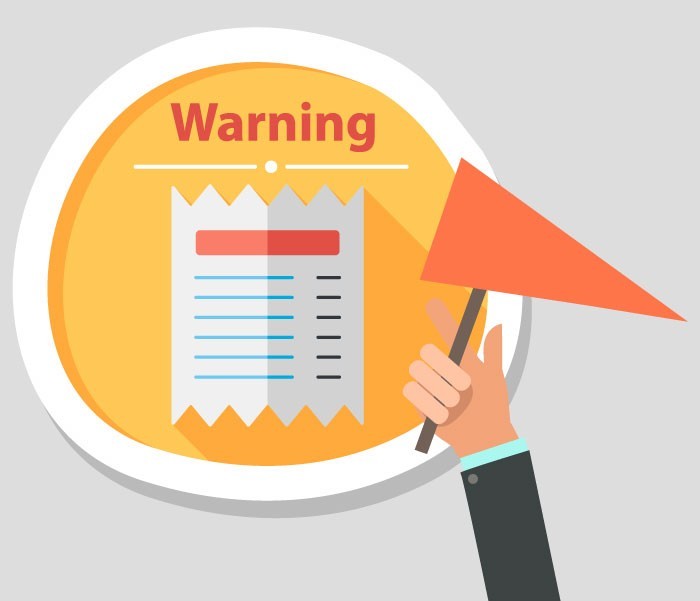When financial statement red flags appear in your books, are you knowledgeable enough to spot them? Bookkeepers and CPAs are certainly adept at catching these warning signs, but business owners should have at least a basic grasp of what their company's financial statements reveal about the relative health of the enterprise.
In particular, these documents are worth closely scrutinizing in good business times and bad:
- Balance sheet. A balance sheet offers a quick view of a company's assets (elements of value such as cash, accounts receivable, equipment, etc.) and its liabilities (payroll, line of credit, accounts payable, etc.). A company's net worth (determined by subtracting total liabilities from total assets) is also found on the balance sheet.
- Cash flow statement. This documents the amount of cash a business generates within a specific time-frame, a reliable indicator for its ability to pay bills. It also shows the net increase or decrease in cash resulting from business operations, as well as investment and financing activities.
- Income statement (also known as profit and loss statement). The income statement tracks a company's revenues and expenses over a particular period of time.
With these documents in hand, what financial statement red flags should you be watching for?
Underperforming Cash Flow Patterns
You might be running a profitable enterprise on paper, but still lack cash for that business. The absence of an identifiable cash flow suggests difficulties collecting accounts receivable (see below) and/or difficulties making payments on outstanding loans. When more cash flows out rather than in, it's a sign that the long-range outlook is unfavorable.
Also, according to the business advisory firm blumshapiro, "if the business is generating more cash from investing than it is from operations, it is financing its operations through debt, the servicing of which could become problematic."
Lingering Past Due Payments in Accounts Receivable
It's OK to have a high accounts receivable, as long as the process of collecting payment for products sold or services rendered isn't in jeopardy. The accepted wisdom in accounting is that the longer past due accounts increase, the greater the likelihood a customer won't pay down the balance of his or her debt.
Fixed Costs Outpacing Revenue Growth
A thriving business will regularly increase the fixed costs for such things as hiring additional employees and leasing bigger office space. But when these fixed costs outpace the growth in revenue, that business could be in trouble.
Costs of Goods Sold (COGS) is Too High
Like fixed assets, Cost of Goods Sold shouldn't be growing at a faster rate than revenue. An unacceptably high COGS means your product or service isn't profitable enough to sustain the business. Either your offering is priced too low or your operating costs are too great. This usually indicates operational inefficiencies or simply that you're not charging enough for your goods or services.
Increasing Inventory
Rising inventory is a clear red flag that your product isn't selling. Inventory that languishes too long in your warehouse can deteriorate in value or become obsolete. Either way, you lose money.
Decreasing Value of Equipment
Don't fall for the misconception that equipment that's not being used during slow business times still maintains its original value. Annual depreciation takes place regardless of how much or how little that equipment is used. To make matters worse, as the accounting firm of Feeley & Driscoll notes, "you're not buying replacement equipment at current market prices, meaning you'll likely pay more when you finally have to upgrade."
A business owner who understands financial statements can recognize an existing (or potential) financial red flag and do something about it before matters get out of hand. Increasingly, businesses are turning to online accounting systems to provide this valuable solution.









